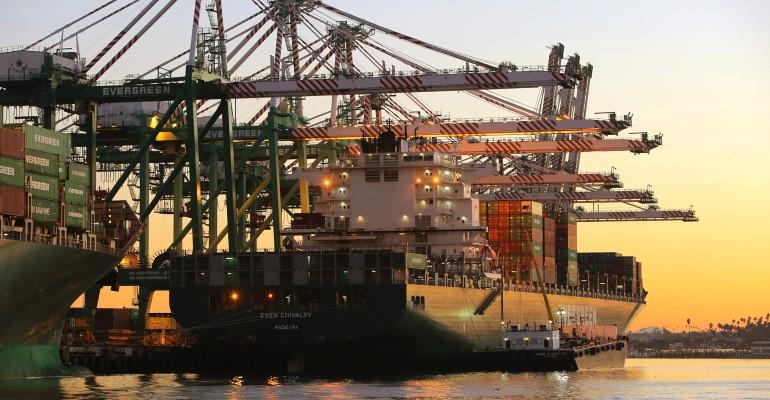The latest market updates from market intelligence platform Xeneta and analyst Sea-Intelligence paint a bleak picture for the container market as container lines choose a price war over aggressive capacity management.
Xeneta’s data shows that on the five major fronthaul routes out of Asia, contract rates were on average $3,900 per feu higher than spot rates as of 12 December 2022. The same measurement on 12 February 2022 was $810 per feu.
“The corridor with the greatest fall was the Far East to US East Coast, where a long-term premium of $5,180 per feu in mid-December collapsed to $1,280 over the course of the next two months,” said Xeneta.
The falling contract rates mark the end of a costly COVID hangover for shippers. The high freight rate environment caused by equipment and personnel shortages, terminal congestion and increased consumer demand in the wake of the pandemic was locked in by longterm contracts signed when shippers feared further rate rises and needed to secure space on vessels.
As container congestion eased and spot prices began to fall, many shippers were left paying over the odds for shipping until contract renewals came around. Xeneta chief analyst Peter Sand said that shippers are now “firmly in ascendancy” in those negotiations.
“Many shippers are looking to secure index-linked agreements to ensure they don’t miss out on future rates falls. In a recent webinar for Xeneta customers, almost a quarter of participants responded they were signing up for index-linked 12 month deals. Another one in five revealed they were shortening the length of their new long-term contracts to between three and six months to benefit from what is expected to be a continued downward trend,” said Sand.
“The fact they can follow these strategies clearly demonstrates their increased power at the negotiating table.”
Alan Murphy, CEO, Sea-Intelligence looked behind the rates and saw falling rates as a strategic decision by container lines. The onset of the pandemic showed that container lines had the power and willing to slash capacity to mirror a drop in demand and support vessel utilisation.
“In September 2022 demand collapsed once again and kept dropping for the rest of 2022. The structural setup in the market at the end of 2022 was relatively unchanged compared to 2020, and as such, the carriers must be assumed to still have the same ability at the end of 2022 as they did in 2020, to reduce capacity in line with the collapse in demand,” said Murphy.
Container lines have chosen not to cut capacity in the latest demand collapse with market data showing no link between demand and capacity in recent months.
Summarising the current state of the market, Murphy said: “This can only be seen as a choice on the part of the carriers. A choice to allow overcapacity to persist, is also a choice to allow for low utilisation, and thus to allow for freight rates to continue to drop. This is a behaviour we know by a different word: A price war."
Copyright © 2024. All rights reserved. Seatrade, a trading name of Informa Markets (UK) Limited.
Add Seatrade Maritime News to your Google News feed.  |

